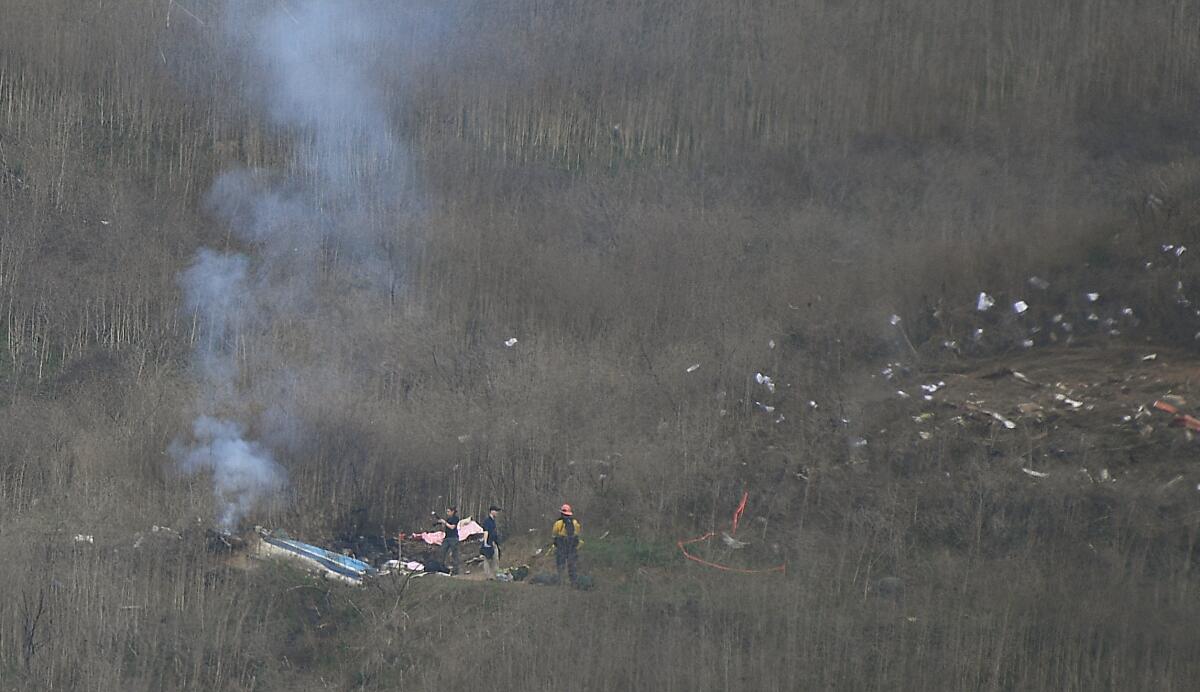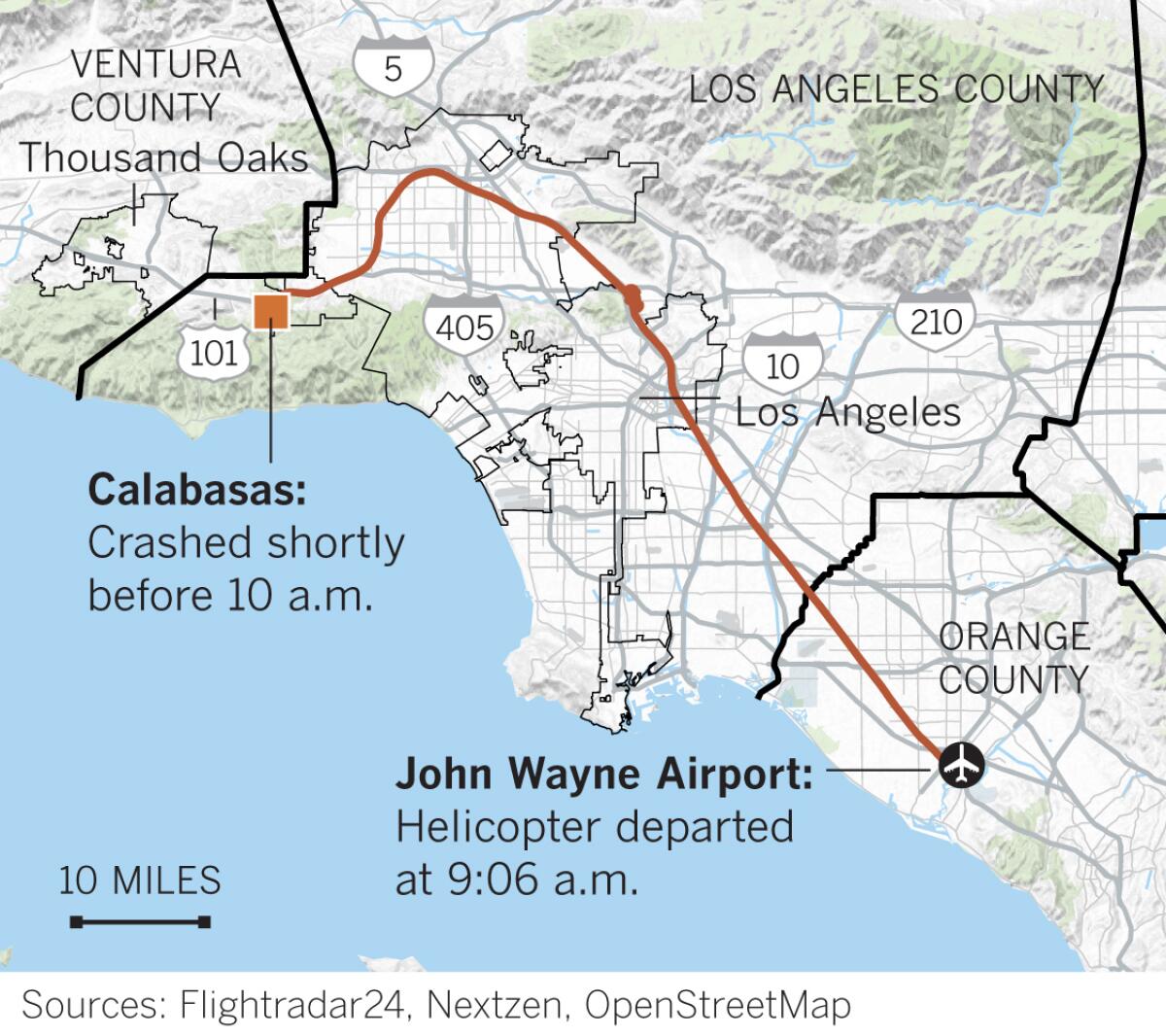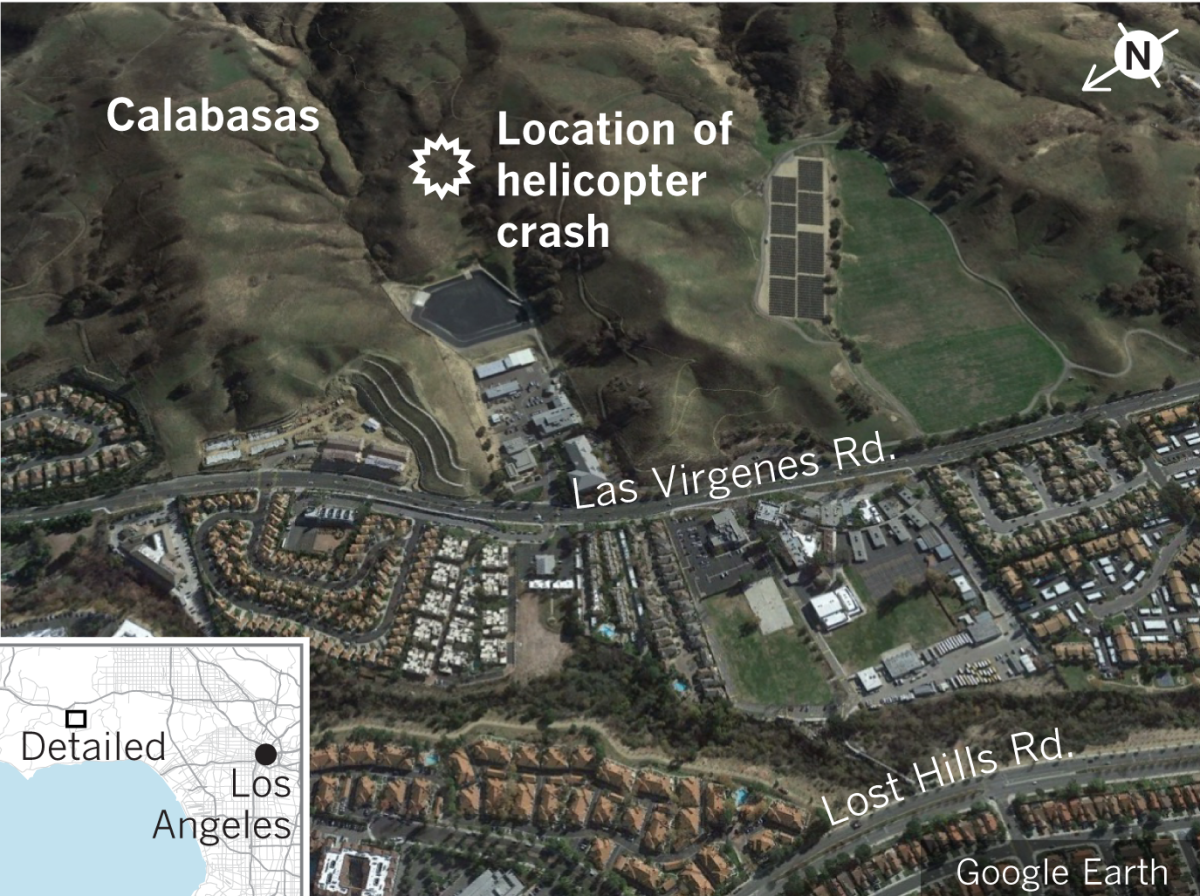Kobe Bryant’s helicopter was like a limousine and had a strong safety record, NBA star’s former pilot says

The helicopter that crashed Sunday morning in Calabasas, killing Kobe Bryant, his daughter and seven others on board, had the feel of a limousine and boasted a strong safety record, said the basketball star’s former pilot.
Kurt Deetz, a former pilot for Island Express Helicopters, told The Times he flew Bryant from 2014 to 2016. Nine times out of 10, he said, Bryant flew in “Two Echo X-ray” — the Sikorsky S-76B, tail No. N72EX, that went down Sunday morning. When Bryant retired from the NBA in 2016, he flew out of downtown Los Angeles in the same helicopter, wrapped in a gray-and-black paint scheme with his Mamba emblem on the side, Deetz said.
Deetz, who said he spent more than 1,000 hours flying the craft that crashed Sunday, called its condition “fantastic.” Island Express follows a “very good maintenance program,” he said. The helicopter was owned by Island Express, according to Deetz.
Bryant favored the S-76B, Deetz said, which he compared to “a Cadillac, a limousine — it’s limo-esque.” The model is preferred by celebrities and known as comfortable and safe, he said. Its sister model, the S-76A, “is more like a work truck,” he said.
When he flew Bryant, Deetz said, the star was quiet: “It was always, ‘Hey,’ thumbs up, or sometimes nothing at all. He kept to himself. He would get in, get out, and that was it. There was no hugging, no backslapping — he was very professional.”
Deetz recalled one flight, on Father’s Day in 2016: He was spending the day with his son when he got a call — could he fly Bryant to downtown Los Angeles? Deetz brought along his son, who sat with him up front. Bryant was with his daughters in the back. He spotted Deetz’s son: “He’s a very private guy,” Deetz recalled, “but he noticed my son there and he said, ‘Hey, little man.’ My son and I remembered that today.”
The crash occurred shortly before 10 a.m. near Las Virgenes Road and Willow Glen Street in Calabasas. Authorities received a 911 call at 9:47 a.m., and firefighters arrived to find that the crash had ignited a quarter-acre brush fire in steep terrain, said L.A. County Fire Chief Daryl Osby. Responders included 56 fire personnel — firefighters, a helicopter with paramedics, hand crews — and sheriff’s deputies.

The helicopter, built in 1991, departed John Wayne Airport at 9:06 a.m. Sunday, according to publicly available flight records. The chopper passed over Boyle Heights, near Dodger Stadium, and circled over Glendale during the flight.
The National Transportation Safety Board is dispatching a “Go Team,” a squad of investigators that responds to major accidents across the country, said Christopher O’Neil, an agency spokesman. The first team is expected to arrive at the scene of the crash Sunday evening, O’Neil said. Leading the investigation is Jennifer Homendy, an NTSB member who oversaw the investigation of a fire aboard the dive boat Conception, which killed 34 people off Santa Cruz Island in September.
When Deetz learned Bryant had died aboard the helicopter he’d flown him on so many times, “my heart sank,” he said. “In this business, when you hear about a crash like this, it’s a very surreal experience.”
Deetz said weather conditions were poor in Van Nuys on Sunday morning — “not good at all.”
The crash was more likely caused by bad weather than engine or mechanical issues, he said. “The likelihood of a catastrophic twin engine failure on that aircraft — it just doesn’t happen,” he said.
Judging from a public record of the flight path and the wide debris field, Deetz said that it appears the helicopter was traveling very fast at the time of impact, about 160 mph. After a 40-minute flight, Deetz added, the craft would have had about 800 pounds of fuel on board. “That’s enough to start a pretty big fire,” he said.

More to Read
Sign up for Essential California
The most important California stories and recommendations in your inbox every morning.
You may occasionally receive promotional content from the Los Angeles Times.










